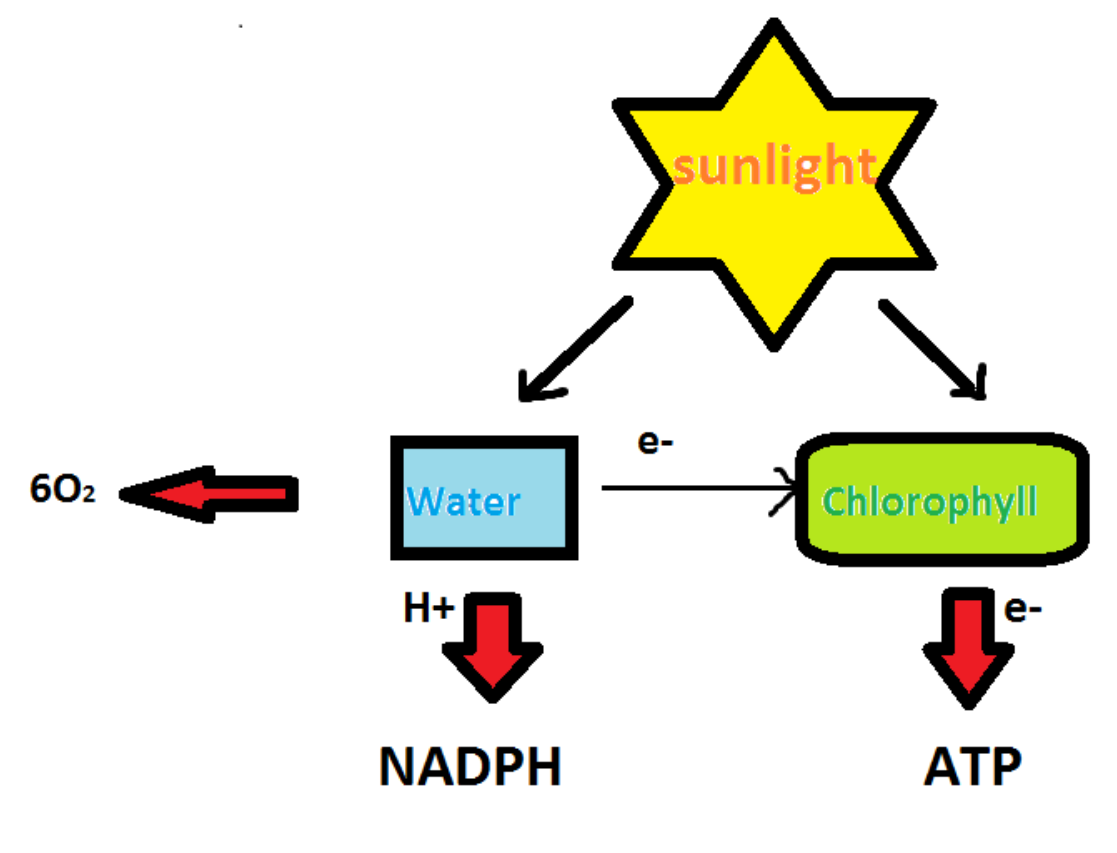
The product of light reaction during photosynthesis include
A) ATP and NADPH
B) $O_2$ and $NADP^+$
C) $O_2$ and $H_2O$
D) $NADP^+$ and $H_2O$
Answer
584.4k+ views
Hint: The light dependent photosynthesis takes place in the thylakoid membrane of the chloroplast. It transforms light energy into chemical energy.
Complete Answer:
Photosynthesis is the process of conversion of light energy to chemical energy. In this reaction, plants prepare their own food in the presence of sunlight and chlorophyll. The process of photosynthesis occurs in two steps- light dependent reaction and light independent reaction.
Light dependent reaction-
- It takes place in the chloroplast of the leaves. The pigment chlorophyll is the most essential requirement which is present in the thylakoid.
- This light reaction takes place in thylakoids. In this complex photo-system, the electrons are excited as a result of photolysis of water to hydrogen ion and oxygen.
- By the end of the electron transfer chain $NADP^+$ (Nicotinamide Adenine dinucleotide phosphate) is reduced to NADPH.
- Also the ADP is reduced to ATP (Adenosine triphosphate). The oxygen is released to the atmosphere as the by-product.

In the Calvin cycle or dark reaction- It is the light-independent reaction which takes place in stroma of chloroplast. The NADPH and ATP obtained from the light reaction along with carbon dioxide is utilised to form glucose.
Thus the correct answer is (A) NADPH and ATP are the products of light reaction.
Note: For light dependent reactions, $CO_2$, water, sunlight and chlorophyll are essential. NADPH and ATP produced in light reaction are utilised in the dark reaction.
Complete Answer:
Photosynthesis is the process of conversion of light energy to chemical energy. In this reaction, plants prepare their own food in the presence of sunlight and chlorophyll. The process of photosynthesis occurs in two steps- light dependent reaction and light independent reaction.
Light dependent reaction-
- It takes place in the chloroplast of the leaves. The pigment chlorophyll is the most essential requirement which is present in the thylakoid.
- This light reaction takes place in thylakoids. In this complex photo-system, the electrons are excited as a result of photolysis of water to hydrogen ion and oxygen.
- By the end of the electron transfer chain $NADP^+$ (Nicotinamide Adenine dinucleotide phosphate) is reduced to NADPH.
- Also the ADP is reduced to ATP (Adenosine triphosphate). The oxygen is released to the atmosphere as the by-product.

In the Calvin cycle or dark reaction- It is the light-independent reaction which takes place in stroma of chloroplast. The NADPH and ATP obtained from the light reaction along with carbon dioxide is utilised to form glucose.
Thus the correct answer is (A) NADPH and ATP are the products of light reaction.
Note: For light dependent reactions, $CO_2$, water, sunlight and chlorophyll are essential. NADPH and ATP produced in light reaction are utilised in the dark reaction.
Recently Updated Pages
The number of solutions in x in 02pi for which sqrt class 12 maths CBSE

Write any two methods of preparation of phenol Give class 12 chemistry CBSE

Differentiate between action potential and resting class 12 biology CBSE

Two plane mirrors arranged at right angles to each class 12 physics CBSE

Which of the following molecules is are chiral A I class 12 chemistry CBSE

Name different types of neurons and give one function class 12 biology CBSE

Trending doubts
One Metric ton is equal to kg A 10000 B 1000 C 100 class 11 physics CBSE

Explain zero factorial class 11 maths CBSE

What is 1s 2s 2p 3s 3p class 11 chemistry CBSE

Discuss the various forms of bacteria class 11 biology CBSE

State the laws of reflection of light

An example of chemosynthetic bacteria is A E coli B class 11 biology CBSE




